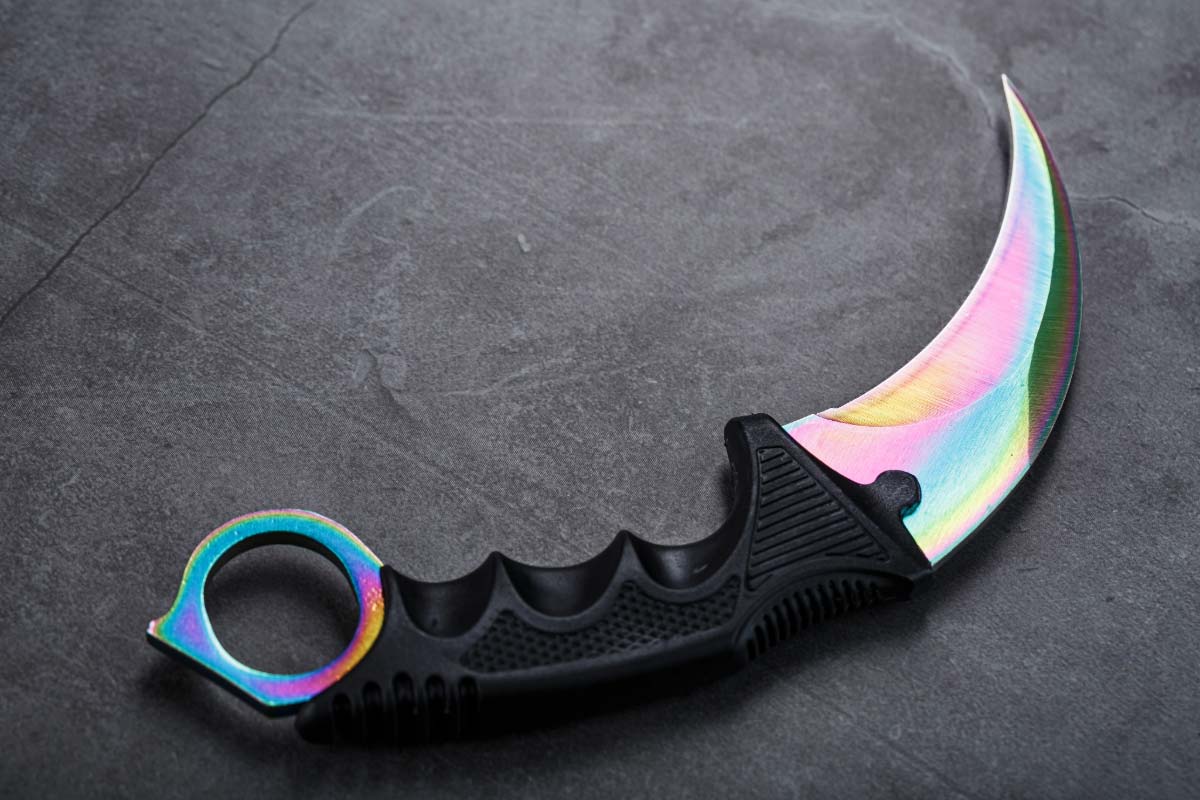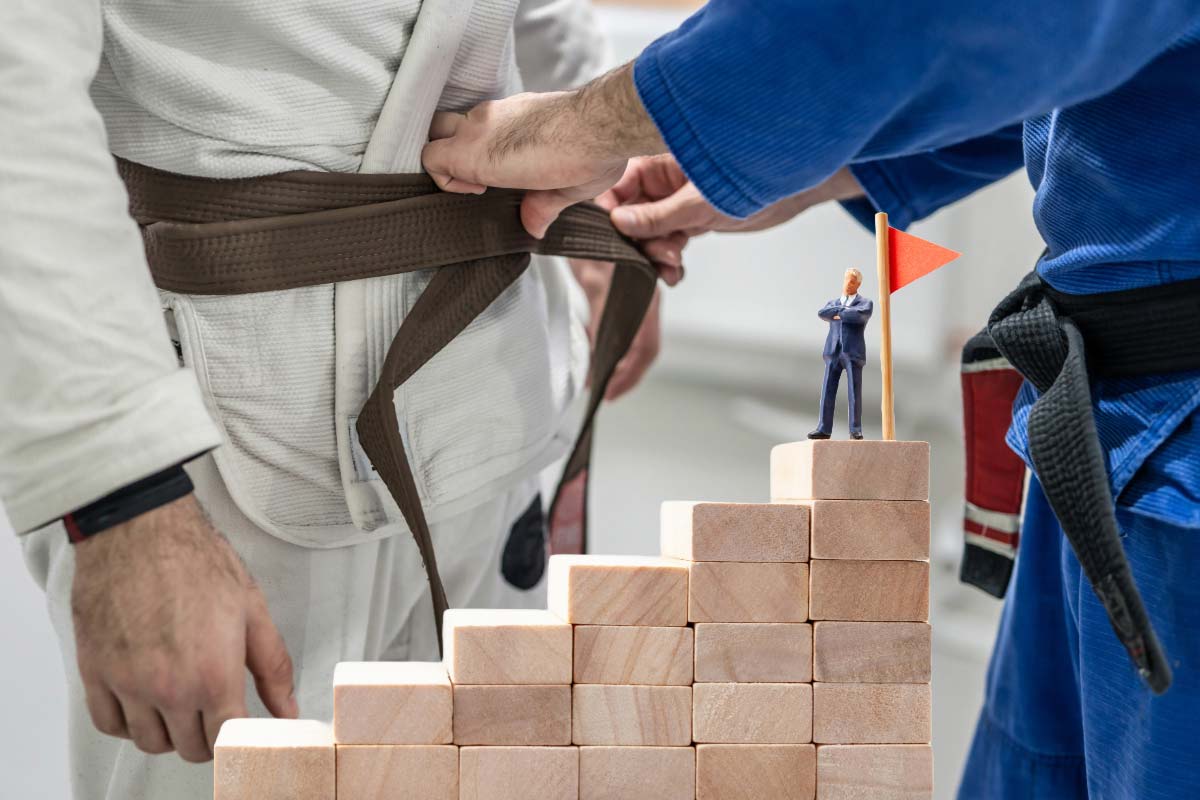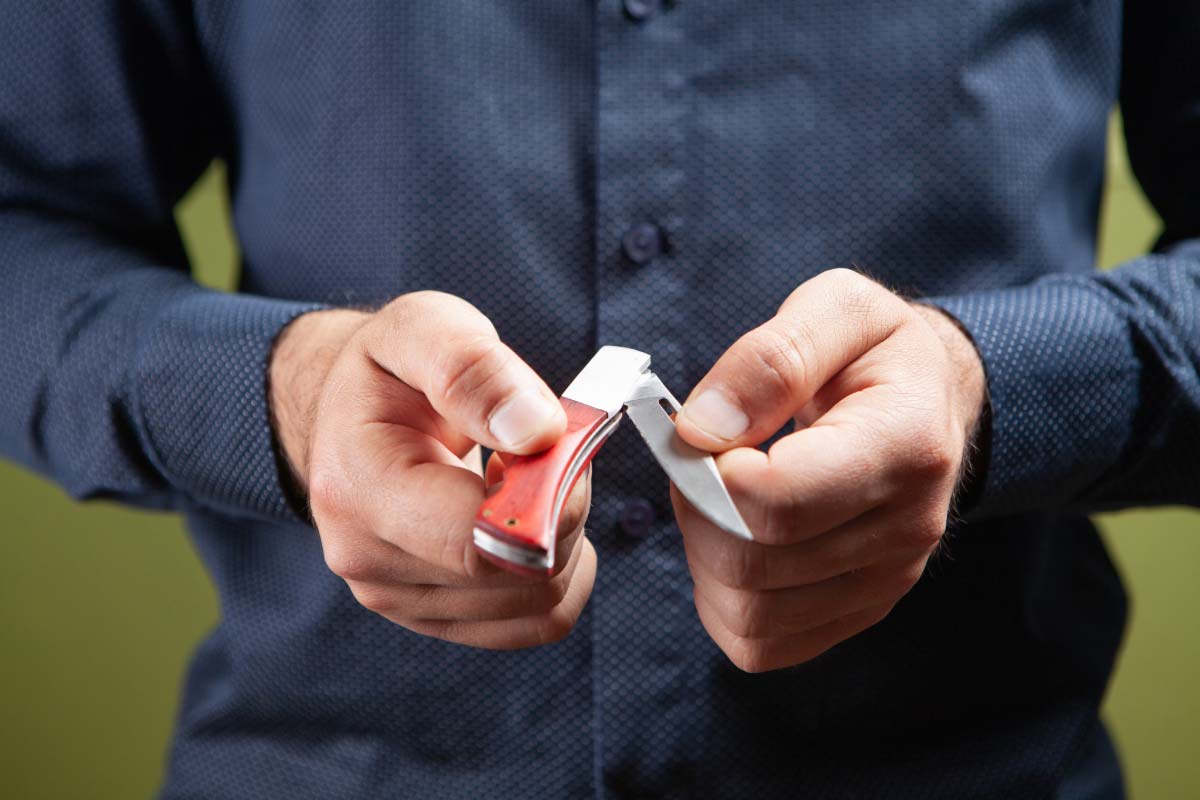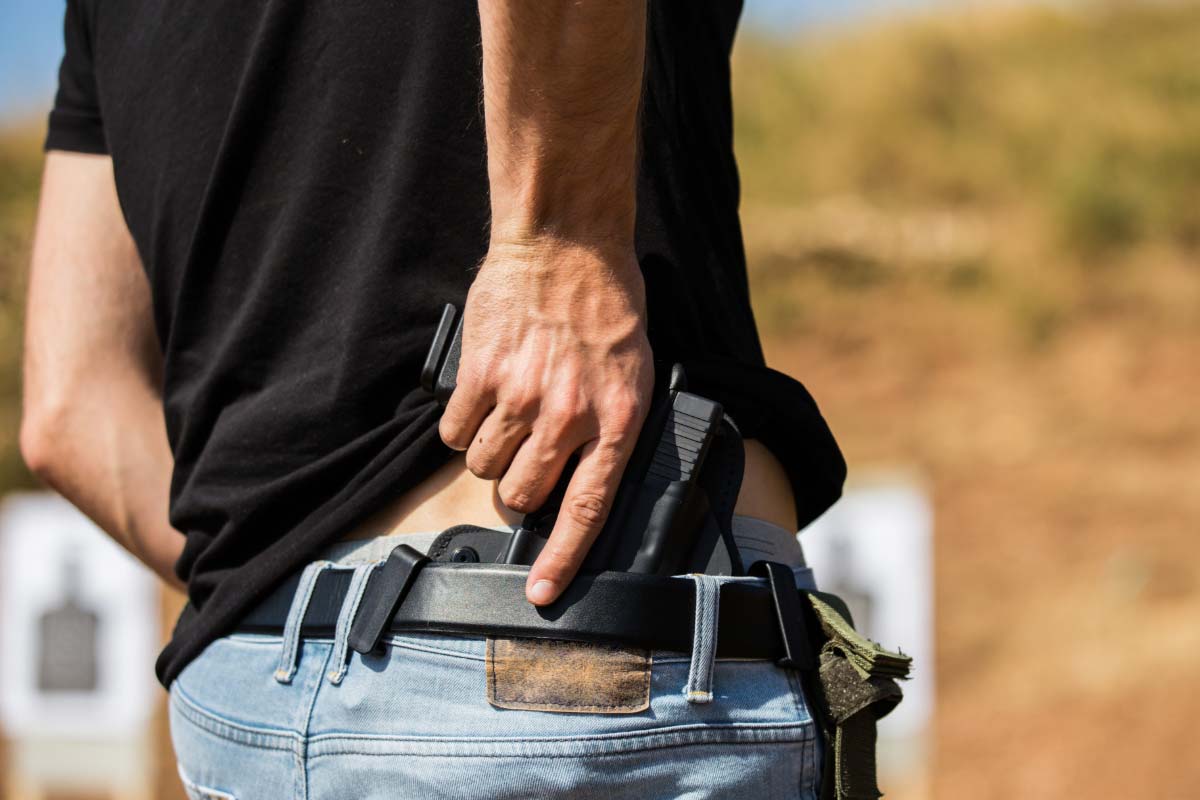The karambit knife, with its distinctive curved blade, is a standout in the world of edged weapons.
Originating from Southeast Asia, this tool has evolved from a farmer’s aid to a modern martial artist’s ally.
Learn about the Karambit’s practical design, cultural history, and the undeniable cool factor that make karambits a top choice for knife enthusiasts and self-defense practitioners.
Learn what sets the karambit apart and how it has become a symbol of both tradition and innovation.
This article covers:
Origin and Evolution of the Karambit
The karambit knife boasts a rich history and distinct design that has evolved through the centuries. Its ongoing relevance in modern-day combat and utility uses marks it as a remarkable blade among knife enthusiasts.
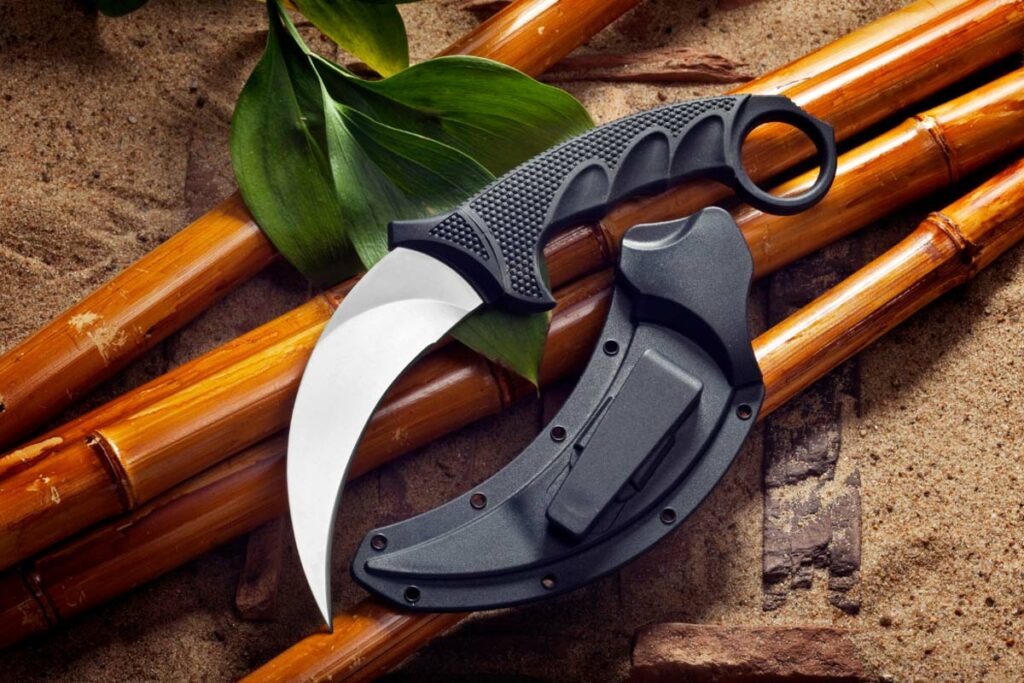
Indonesian Roots
The karambit originated in Indonesia, with deep cultural ties to the Minangkabau people of West Sumatra.
Farmers initially used the curved blade as a tool for rigging, raking roots, and planting rice.
The karambit’s unique shape, resembling a tiger’s claw, allowed for versatility in agricultural tasks.
Over time, its practicality extended beyond farming communities and spread throughout Southeast Asia.
Influence of Martial Arts
Linked to the karambit’s rise in popularity was its integration into the martial art of Silat.
Silat practitioners recognized the karambit’s potential as a self-defense weapon.
Its ergonomic design and sharp curve make it suitable for close-quarters combat, emphasizing precise and controlled movements.
The design influenced by martial arts has helped to shape the contemporary form of the karambit, adapting it for both martial application and everyday utility.
Karambit Design Fundamentals
The karambit knife stands out with its unique design rooted in practicality and efficiency. Its form is instantly recognizable, accommodating both utilitarian use and self-defense applications.

Distinctive Features
The karambit is characterized by a curved blade, typically resembling a tiger’s claw, which makes it ideal for cutting and slicing through tough materials with ease. This curvature allows for a natural pulling motion during cutting tasks.
Additionally, most karambits feature a finger ring on the handle, providing a secure grip and various ways to manipulate the blade safely and effectively.
This ring also facilitates quicker deployment and retention, crucial in high-stress situations.
Blade Variants
Karambit blades come in two main variants: the hawkbill blade, which curves inward, and a less common straight blade style. The blade may also be single-sided or sharp on both sides.
The hawkbill blade is known for its aggressive cutting edge and pointed tip, making it efficient for hooking and tearing actions.
Karambits may also be either fixed or folding blades, with full tang versions offering increased durability, as the blade material extends through the handle.
Handle Characteristics
Karambit handles are designed to match the functionality of their blades, offering secure and comfortable grip options.
They are usually constructed from robust materials like G-10, aluminum, or rubber to ensure resilience and endurance.
G-10 handles are favored for their balance of lightness and strength, while aluminum handles add durability without significant weight.
Rubber handles provide additional grip security, particularly in wet conditions, enhancing the user’s control over the knife.
Functional Aspects of Karambits
Karambits are distinguished by their curved blade, which enhances specific utilitarian and defensive capabilities. Originating from Indonesia, their functional design now extends to various applications, serving needs in self-defense, utility tasks, and martial combat.
Self-Defense Applications
Karambits feature a hawkbill-shaped blade that offers tactical advantages for self-defense scenarios.
Their acute tip aids in effective slicing, and the presence of a finger ring on the pommel of most karambits ensures a secure grip during rapid movements.
Often used in close-quarters defense, the finger ring enhances retention, making it difficult for an adversary to disarm the user.
Utility in Everyday Carry
Despite their combat origins, karambits have evolved into practical tools for everyday carry (EDC). Their unique design allows for precise cuts and can handle a variety of materials, from rope to cardboard. Users favor the EDC karambit for its efficiency in daily tasks, which complements its defensive nature.
Martial Arts and Combat Usage
In martial arts, the karambit is respected for its applicability in hand-to-hand combat. Its design extends the user’s reach and can mimic movements akin to a tiger’s claw, providing strategic advantages in combat situations. As a tactical knife, the karambit transitions smoothly between offensive and defensive techniques, making it a versatile choice for trained martial artists.
Types of Karambit Knives
Karambit knives come in various models with distinctive features suited for different uses.
They are primarily divided into fixed blades and folding varieties, each with its own set of popular models known for their unique characteristics and functionalities.
Fixed Blades vs Folding Karambits
Fixed blade karambits are designed as a single solid piece, making them exceptionally sturdy.
They often mimic the traditional design, with a curved blade that enhances the cutting and slicing capabilities.
These knives are favored for their reliability and are frequently used in tactical and survival situations. Among the best karambit knives, the Cold Steel Steel Tiger stands out for its classic design and robust construction.
On the other hand, folding karambits, also known as folders, offer portability and safety, with the ability to safely tuck the blade away. The mechanism allows for quick deployment when needed.
Folders are practical for everyday carry (EDC) and are easier to conceal, making them a versatile choice for many.
Popular Karambit Models
The market features several popular karambit models that cater to different preferences. For example, the CRKT Provoke is renowned for its innovative kinematic deployment mechanism, while the CRKT Du Hoc honors tradition with its hawkbill-shaped blade. Both models boast a design that prioritizes quick access and usability.
In the realm of fixed blades, the Schrade SCH111 Karambit is recognized for its reliability and affordability. For those seeking a high-end option, Toor Knives Karsumba showcases fine craftsmanship and superior materials, making it a premium choice.

Meanwhile, Smith & Wesson Extreme Ops Karambit is an accessible option for those wanting a balance between quality and cost.
Lastly, Fox Knives are notable for their variety, offering both fixed and folding designs that meet high standards of quality and performance.
Selecting a Karambit
When choosing a karambit, potential buyers should carefully assess the knife’s materials, design, and practical use. These factors influence the knife’s functionality for self-defense, utility tasks, or display.
Considerations for Purchase
One should select a karambit with a blade length and weight that suits their hand size and strength.
High-quality steel like S35VN or 9Cr18MoV ensures a balance between toughness and edge retention.
The choice between a kydex sheath and a leather sheath also impacts the ease of access and protection of the blade. An individual’s intention, whether for daily carry or tactical use, will inform their decision on the right karambit to purchase.
Maintaining and Carrying
Maintaining a karambit requires regular sharpening and cleaning, especially for blades with high carbon content like S35VN steel.
Carrying options vary, with sheaths offering different attachment points for ease of transport.
The weight of a karambit influences comfort and agility when carried, so one should consider this alongside the sheath material and design, whether kydex or leather, to optimize carry experience.
Have you used a Karambit knife before? What do you think is the coolest knife or bladed weapon? Leave a comment below.

